Sackville House
Houses within 10km of this house
Displaying 38 houses.
Houses within 10km of Sackville House
Displaying 38 houses.
| House name | Description | |
|---|---|---|
| Ballyard House | At the time of Griffith's Valuation, Francis Crosbie was leasing Ballyard House from Reverend Arthur Rowan, when it was valued at £35. The Colthurst Estate sale notice of 1856 notes that Thompson leased the property from Nicholas Colthurst in the 1820s and that A.B. Rowan was an assignee of Thompson. Bary states that this house was possibly re-modelled by Peter Thompson in the late 1820s. |

|
| Ballyard | The representatives of Peter Foley were leasing a property at Ballyard to Margaret Crosbie at the time of Griffith's Valuation, when it was valued at £30. Lewis records Ballard as the seat of Francis Crosbie in 1837. | |
| Ballyard B | Geoffrey Eager was leasing a property to Patrick Ryan at the time of Griffith's Valuation, when it was valued at £15. | |
| West Villa or West Lodge | Edward Mulchinock was leasing this property from Sir George Colthurst at the time of Griffith's Valuation when it was valued at £15. Bary writes that this is the house associated with William Mulchinock, the writer of the famous song "The Rose of Tralee". It is still extant and occupied. | |
| Cloghers House | In 1786 Wilson refers to Cloghers as the seat of Richard Yielding. John Mulchinock was leasing two adjoining properties from the Colthurst estate at the time of Griffith's Valuation, one valued at £50 and the second at £15. The Irish Tourist Association Survey notes that Cloghers was "once the home of the Mulchinock family who were big landowners" and relates the story of the song "the Rose of Tralee". Bary writes that this property was associated with the Carrigue family in the eighteenth century and also that John Mulchinock was an uncle of William Mulchinock, author of the song. She indicates that it was later owned by the Fitzmaurice family. It is still extant. |
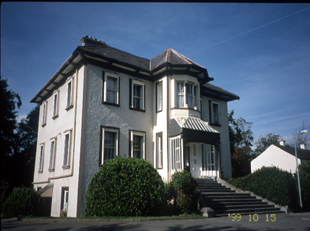
|
| Belmont | Reverend Arthur Rowan was leasing Belmont from Arthur Chute at the time of Griffith's Valuation, when it was valued at £40. Lewis records it as the seat of Reverend A.B. Rowan in 1837. The Ordnance Survey Name Books suggest the house was built by his father in 1826 and cost £1500. However, Bary states that the house, in common with other houses in the vicinity, was built by Peter Thompson in the 1820s, when he was Treasurer of County Kerry. It is still extant and occupied. |
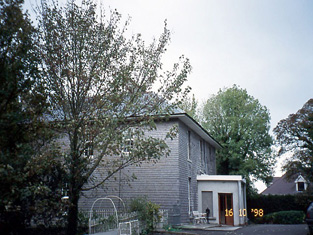
|
| Spring Lodge | Rev. Arthur Rowan was leasing this property to Robert Bell at the time of Griffith's Valuation, when it was valued at £15. Lewis records Spring Lodge as the residence of F.J. Martelli in 1837. Bary states that this is another of the houses built by Peter Thompson in the 1820s. Rowan was married to his daughter Alicia and they lived at nearby Belmont. Spring Lodge is still extant. | |
| Lohercannon House | Catherine Day was leasing this property to Richard Murphy at the time of Griffith's Valuation when it was valued at £15. In 1786 Wilson refers to "Lower-cannon" as "formerly the seat of Rev. Mr. Day, accidentally destroyed by fire". The Ordnance Survey Name Books describe it as the seat of Edward Orpen but originally built by the Day family. Lohercannan is referred to in the Irish Tourist Association Survey of the 1940s as "another building that would be worht a visit".The second house also seems to have been held by the Days but leased out to other families including the Morrises and Eagers. It was demolished to make way for housing in the 1960s. | |
| Ballyroe Lodge | Sir Edward Denny was leasing this property to Pierce Chute at the time of Griffith's Valuation when it was valued at £17 15s. Bary writes that it was built by Pierce Chute, possibly in 1836, according to O'Donovan. The Chutes continued in residence until the late nineteenth century after which it had a succession of owners. It now forms part of the Ballyroe Heights Hotel complex. |
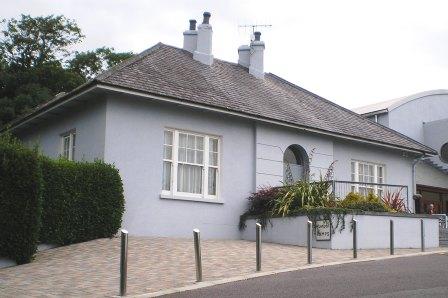
|
| Barrow House | Sir Edward Denny was leasing Barrow House to John Collis at the time of Griffith's Valuation when it was valued at £20 10s. In 1837 Lewis mentions Barra [sic] as the seat of T. Collis. In the 1830s, the Ordnance Survey Name Books indicate it was the residence of John Collis, having been built about two centuries previously. Leet noted it as the seat of John Collis in 1814. Bary states that the house was built by a William Collis, a Cromwellian officer, and continued to be associated with the Collis family until latter half of the nineteenth century. In the 1990s it was a restaurant and guesthouse but has now reverted to private ownership. |
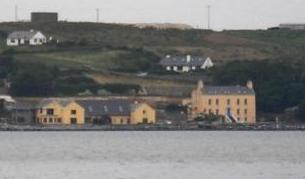
|
| Listrim House | Sir Edward Denny was leasing Listrim House to Robert Fortune at the time of Griffith's Valuation, when it was valued at £12 10s. In the 1830s the Ordnance Survey Name Books record that it was the residence of Henry Oliver by whom it was supposedly erected in 1836. It is now a ruin. | |
| Lisadale Lodge | John Busteed was leasing Lisadale Lodge from William Howard at the time of Griffith's Valuation, when it was valued at £6 10s. The Ordnance Survey Name Books record it as the residence of William Howard, by whom it was supposedly built, in 1836. Bary writes that the house may have been a hunting lodge. It is now ruinous. | |
| Ballygarran House | Sir Edward Denny was the lessor of Ballygarran at the time of Griffith's Valuation, when the property, valued at £9 10s, was vacant. In the 1830s, the Ordnance Survey Field Name Books mention Ballygarran House as the residence of William Hilliard by whose family it had been built in the eighteenth century. It is described as " an oblong low thatched house". Bary notes that it was a house frequently associated with the Hilliard and later the Fitzmaurice families. It was demolished in the mid-twentieth century. | |
| Lassinah | John Day Stokes was leasing this property from Sir Edward Denny at the time of Griffith's Valuation, when it was valued at £20 10s. Bary states that Major Stokes retired here from his Indian Army post and renovated the house where he lived until 1862. It remained in the Stokes family until the end of the nineteenth century and was recorded by Slater as the seat of Maj. Oliver R. Stokes in 1894. It is still extant but ruined. | |
| Kent Lodge | Richard O'Connell was leasing this property from the Denny estate at the time of Griffith's Valuation, when it was valued at £10 10s. Bary states that this house was attached to an earlier building known as O'Connell's Cottage where Rickard O'Connell lived but that Kent Lodge was built by William Collis. The house, which is still extant, remained in the Collis family until the early twentieth century. |
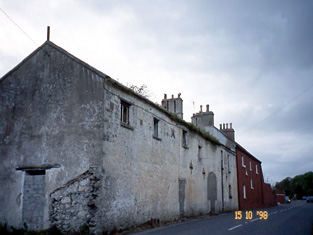
|
| Church Hill House | At the time of Griffith's Valuation, Rev. Henry Denny was leasing Church Hill from Sir Edward Denny when it was valued at £27. According to Bary the house was in the hands of the Denny family for much of the eighteenth and nineteenth centuries until it passed to the Neligans, possibly in the 1880s. In 1906 it was owned by William Neligan and valued at £27. It is still extant and occupied. |

|
| Plover Hill House | Sir Edward Denny was leasing this property to George Gunn at the time of Griffith's Valuaton, when it was valued at £16 5s. Lewis records it as the seat of George Gun in 1837. Bary states that the house was built in the early nineteenth century by Barry-William Gun, whose mother was Arabella Denny. The Gunn family continued to own the property until the 1880s. Buildings still exist at the site. | |
| Frogmore | John McCartie or McCarthy was leasing this property from Sir Edward Denny at the time of Griffith's Valuation, when it was valued at £16. Lewis records Frogmore Lodge as the seat of Reverend Barry Denny in 1837.The Ordnance Survey Name Books reported that it was built by him in 1828 at a cost of £600 and was lived in, in 1840, by Mrs. Townsend Gunn. It is still extant. | |
| Curragh | William John Neligan was leasing this property from the Denny estate at the time of Griffith's Valuation, when it was valued at £8 10s. Bary indicates that the house has always been occupied by merchant families from Tralee. It is still extant. | |
| Doon House | At the time of Griffith's Valuation, William M. Hickson was in possession of this property, then valued at £9 15s. | |
| Oakpark or Collis-Sandes House | Maurice Sandes was in possession of this property at the time of Griffith's Valuation, when it was valued at £60. It is labelled as Oakpark on the 1st edition Ordnance Survey Map. In 1837 Lewis recorded Oakpark as the seat of John Bateman. Bary writes that, Killeen, the original house at this site, was a late seventeenth century house. It was followed by Oakpark, built by John Bateman in the 1820s. This is the house mentioned by Wilson in 1786 as the seat of Rowland Bateman. Maurice Sandes purchased the estate in the late 1840s and built the later Oakpark House c.1857. In 1906 this house was owned by Falkiner Sandes and valued at £112. The house was sold in 1922 and is now used as offices. |
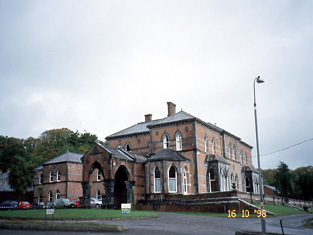
|
| Ann's Villa [Oak Villa] | Thomas Payne was leasing this property from Sir Edward Denny's estate at the time of Griffith's Valuation, when it was valued at £30. The house is labelled Ann's Villa on the 1st edition Ordnance Survey map. A more substantial building, known as Oak Villa, appears on the 25-inch edition of the 1890s. Buildings are still extant at the site. | |
| Lismore | Edward Day Stokes was in possession of the house at Lismore at the time of Griffith's Valuation, when it was valued at £13 10s. Bary writes that the house was associated with the Martelli family who were related by marriage to the Blennerhassetts. Later it was occupied by Collis and Huggard families. It is now a ruin. | |
| Ardfert Abbey | William T. Crosbie was in possession of Ardfert Abbey at the time of Griffith's Valuation, when it was valued at £62. Lewis, writing in 1837 and Leet, in 1814, note the house as the residence of the Earl of Glandore.It was the home of Lt-Col. John Darnley Talbot Crosbie in 1894. In 1906 it was the property of L.T Crosbie and valued at £66. Bary writes that the original house built here by the Crosbies was destroyed in the 1641 rebellion and another erected in the early 18th century. The Ordnance Survey Name Books quote the inscription relating to the original house from 1635. It remained the residence of the family until the late nineteenth century when it passed to John Talbot, whose son, William Talbot-Crosbie, then inherited. The house was burnt during the Civil War in 1922 and only the elaborate entrance gate remains.. |
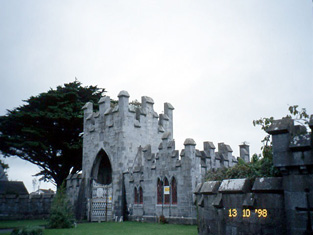
|
| Tubrid House | George Gunn was leasing this property to Henry Hilliard at the time of Griffith's Valuation, when it was valued at £22 10s. Lewis recorded Tubrid as the seat of J. O'Connell.The Ordnance Survey Name Books indicate that this townland was owned by John O'Connell of Grenagh, Killarney and that John Sullivan of Tubrid was his agent in the 1830s. The house was occupied by Capt. Henry Hilliard at that time. In 1814, Leet noted the house as the seat of Townsend Gunn. Bary states that Tubrid House was built by the Crosbie family in the mid-eighteenth century and resided in by several generations of that family. The late eighteenth century owner, John G. Crosbie, was involved in a duel in which Sir Barry Denny was killed. A year later Crosbie himself died in mysterious circumstances. The house afterwards was owned by the Gunn and Hewson families. It is no longer extant. | |
| Ballyheige Castle | Pierce Crosbie was in possession of Ballyheige Castle at the time of Griffith's Valuation, when it was valued at £62 10s. Noted by Slater as the seat of Col. James Crosbie in 1894. In 1906 it was owned by James D. Crosbie and valued at £50. The Ordnance Survey Field Name Books describe the house as "a splendid and commodious building in the Gothic style" and record that the house was burned on the night of 14 November 1840. Bary writes that this had originally been the property of the Cantillons, some of whom later intermarried with the Crosbies. The original house on this site was constructed in the mid-eighteenth century but was renovated and enlarged to the design of Richard Morrison in the early nineteenth century. The building was used as a prison at the time of the War of Independence in the early 1920s and was subsequently burnt. Very little of the original remains but some renovation has taken place and there is holiday accommodation at the site, now surrounded by the Golf Course. |

|
| Ballyheige Glebe | The representatives of Pierce Crosbie were leasing this property to Reverend Thomas Heffernan at the time of Griffith's Valuation, when it was valued at £17 15s. In the 1830s, the Ordnance Survey Name Books describe it as "a good slated house, two stories high", then the residence of Reverend James P. Chute. A house is still extant at the site. | |
| Toanreagh | This house seems to have been constructed after the publication of the 1st edition Ordnance Survey Map but it appears on the 25-inch edition of the 1890s. Richard Oliver was leasing this property to Francis Creagh at the time of Griffith's Valuation, when it was valued at £9 10s. A house and substantial farm are still extant at the site. | |
| Ballynoe House | William Stoughton was leasing this property to Catherine Pierce at the time of Griffith's Valuation, when it was valued at £21 15s. In 1837 Lewis refers to it as the seat of D. Pierce. Leets mentions it as the residence of Daniel Pearce in 1814. In 1906 it was owned by the representatives of Charles William Stoughton and was valued at £19. Bary writes that the Pierce or Pierse family were agents for the Stoughtons. The house is still extant and occupied. | |
| Banna House | Robert E. Stokes was leasing this property from the Earl of Listowel's estate at the time of Griffith's Valuation, when it was valued at £11. Bary writes that it was built by Oliver Stokes in 1815. It was demolished many years ago. | |
| Fortwilliam | Thomas B. Hurley was leasing this property from the Talbot-Crosbie estate at the time of Griffith's Valuation, when it was valued at £18 10s Lewis records the house in Killahan parish when he notes that it as belonging to the representatives of the late W. Collis in 1837. Leet states that William Fitzgerald was resident at Fortwilliam in 1814. . Bary writes that, according to O'Donovan, this house was built by William Collis in 1798. It is no longer extant. | |
| Fenit House or Fenit Lodge | Though this house was mostly associated with the Hurley family, at the time of Griffith's Valuation, it was in the possession of a Miss Locke, when it was valued at £20. It was being leased by John Murray. In 1906 it was owned by John C. Hurley and valued at £33. Bary notes that it later came into the Fuller family through marriage. It was sold in the 1970s but is still extant and occupied. |
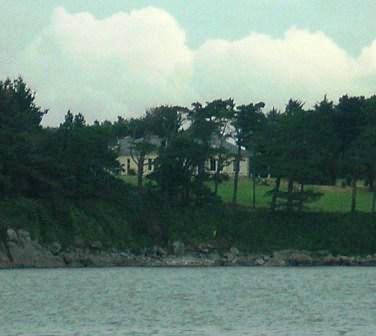
|
| Oyster Hall | Edward Denny was leasing this property to William J. Neligan at the time of Griffith's Valuation, when it was valued at £18 Lewis refers to it as the seat of Barry Collins while Oyster Lodge was the residence of Mr.Neligan in 1837. IIn the 1830s, the Ordnance Survey Field Name Books mention Oyster Hall as the seat of Daniel Supple but originally built by George Rowan in 1804. In 1814, Leet refers to Oyster Hall as the residence of George Rowan. Bary states that Oyster Hall was orginally built by the Rowans but was associated with the Neligans by the middle of the nineteenth century. It is no longer extant. | |
| Abbeylands | In 1906 L.T, Crosbie owned a property at Skrillagh, valued at £17. This townland also belonged to the Crosbie estate at the time of Griffith's Valuation, when it was let to the McElligott family. Bary states that the house, Abbeylands, was built in the 1870s as a residence for George Trench, agent to the Crosbie estate. In 1901 it was occupied by Ross Palmer and his family, JP for county Kerry and creamery owner. It was burnt in 1921 but restored later in the twentieth century and is now an ecumenical retreat centre. | |
| Mount Hawk | In 1906 Mounthawk was owned by Elizabeth Stokes and valued at £18 5s. The townland was in the possession of George Stokes at the time of Griffith's Valuation. Bary states that it was built by George Stokes on lands purchased from the McCarthy family and remained in the Stokes family well into the twentieth century. It was later used as a clubhouse by Tralee Golf Club. | |
| Tralee | At the time of Griffith's Valuation, Francis Crumpe was leasing a property, valued at £31, at Denny St., Tralee, from John Donovan. [Grid Reference is approximate]. | |
| Tralee Castle | In 1786 Wilson writes "at Tralee is a castle in tolerable preservation, formerly one of the castles of the Earls of Desmond, granted by Queen Elizabeth to Sir Anthony Denny, and now the seat of his descendent, Sir Barry Denny". In 1943 the Irish Tourist Association Survey mentions that the last reconstruction of the building occurred in 1802. Bary writes that, after the Act of Union, the Denny family spent more time in England and the castle fell out of use and was eventually demolished and the stones used for other buildings. | |
| Ballyhenry House | In 1786 Wilson refers to Ballyhenry as the seat of Mr. Hartnett. No house is named in this townland on the 1st edition Ordnance Survey Map. At the time of Griffith's Valuation the property is held by Michael Duggan leasing from the Hurley estate and the house is valued at £3 10s. Modern farm buildings exist at the site now. |

